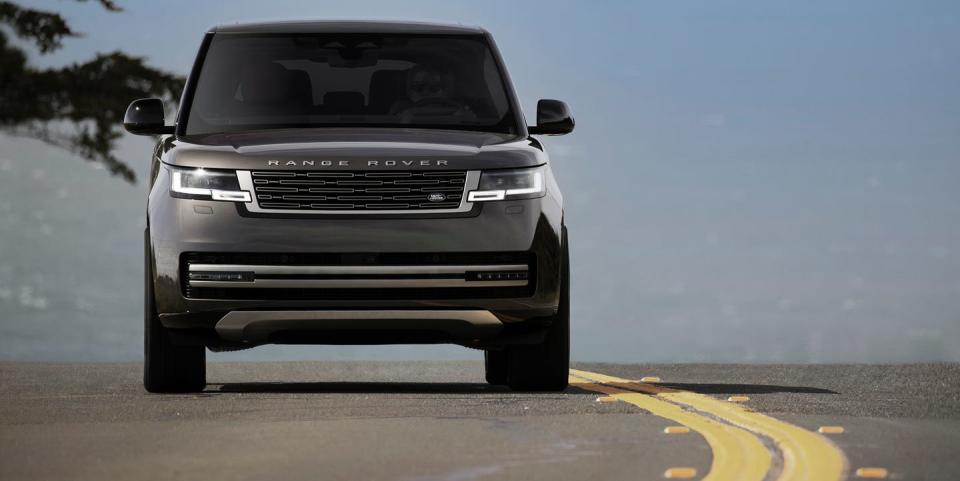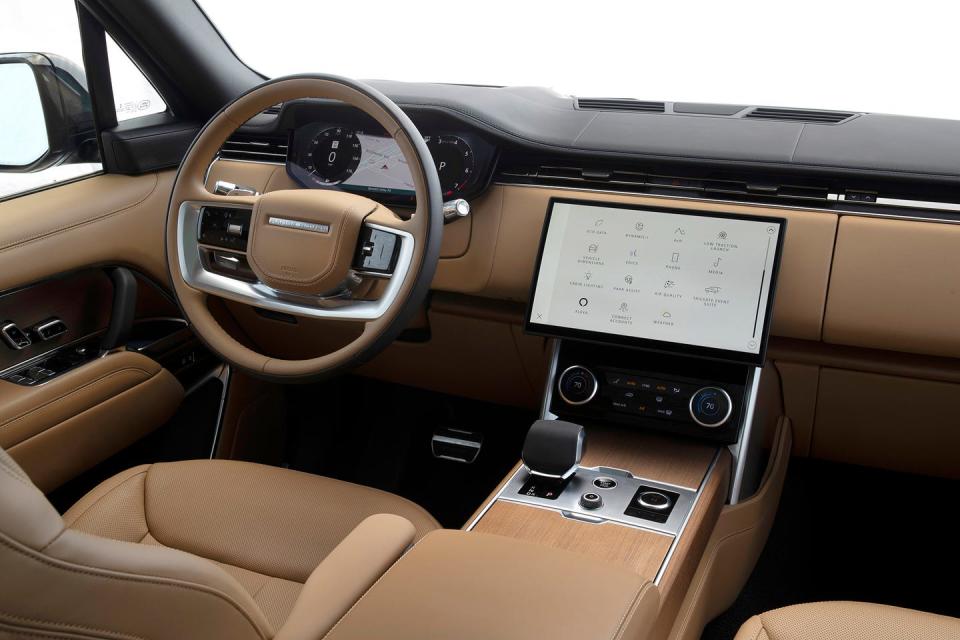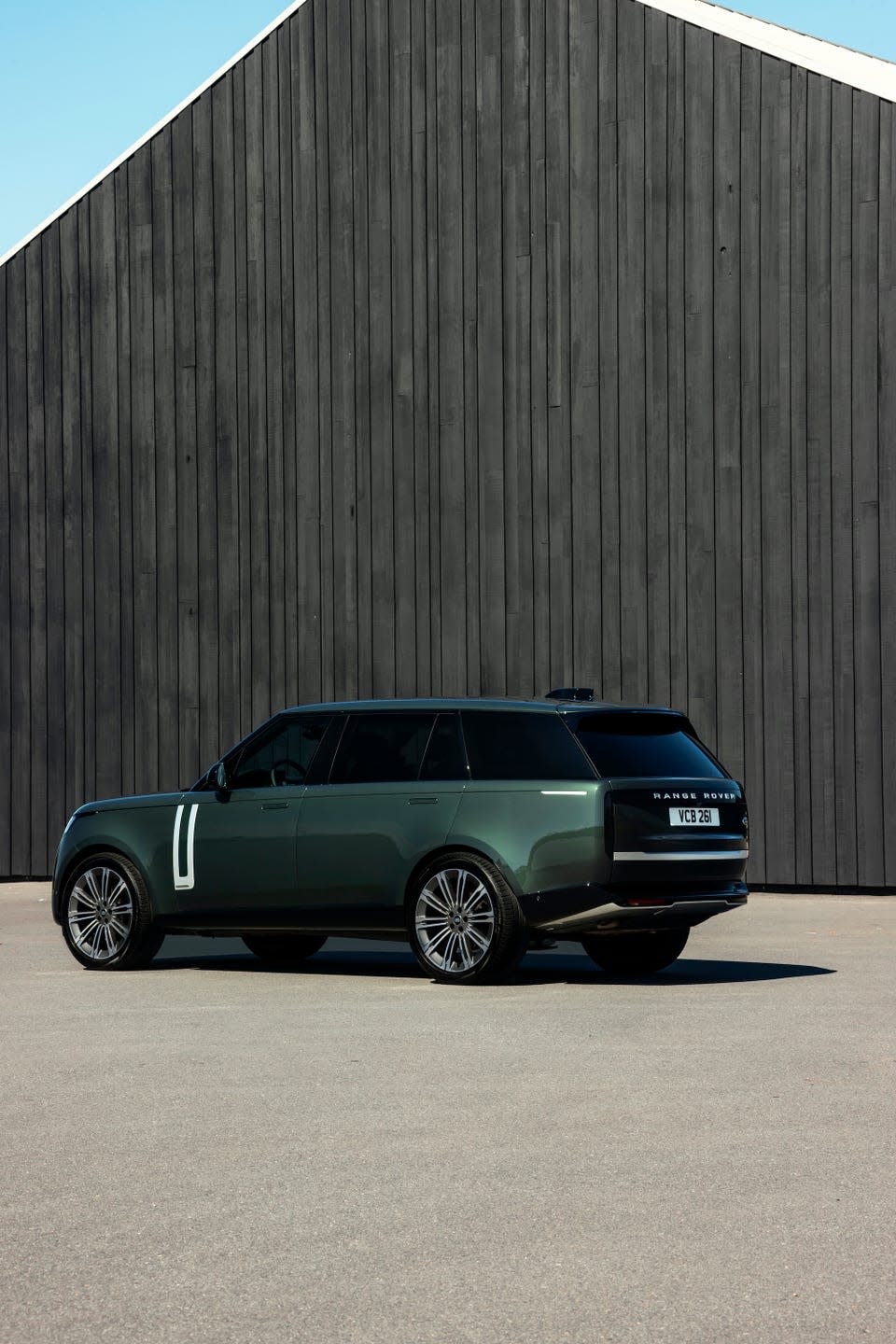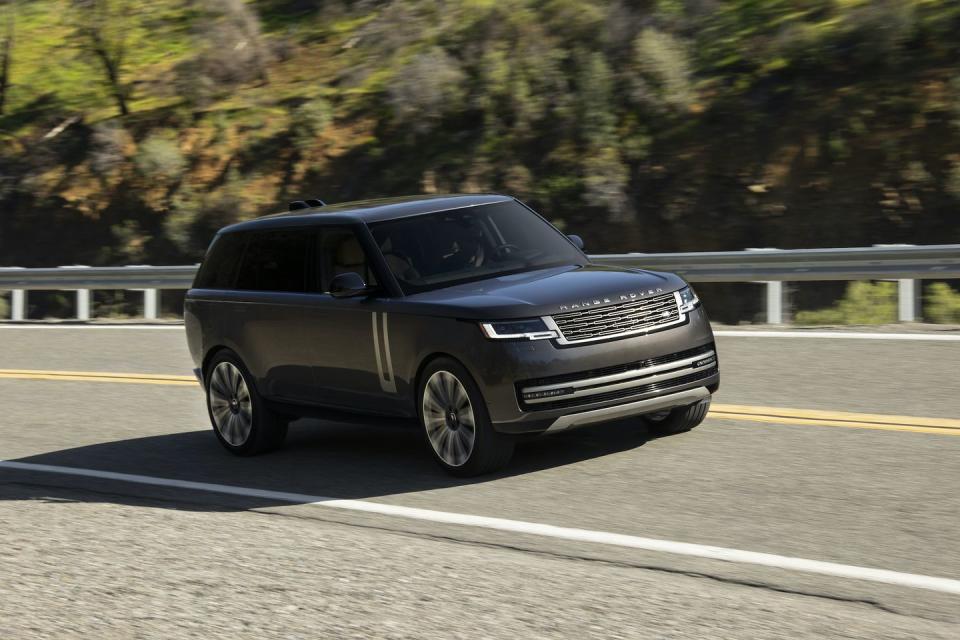The New Range Rover Is Fabulous

It's hard to know where to start with the new Range Rover. After all, this is only the 5th all-new one in more than 50 years. This is a big deal.
The new Range Rover continues a march upmarket that began shortly after the original arrived—it doesn't really compete with, say, the BMW X7 and Mercedes-Benz GLS so much as it does the S-Class and 7-Series. Especially now, given Jaguar Land Rover has killed the Jag XJ sedan. And with the top-level SV model, the Range Rover competes with more niche offerings like the Bentley Bentayga and Aston Martin DBX.
Land Rover invited us to Northern California to sample three new Range Rovers—a short-wheelbase V-8 First Edition, a long-wheelbase six-cylinder, and an SV.

Many will focus on the Range Rover’s gorgeous new exterior and plush interior, though those shouldn't take the spotlight away from the SUV’s many mechanical changes. Unlike the last Range Rover, the new platform incorporates more high strength steel to create a more rigid structure, and in addition to height-adjustable air springs, there's also new adaptive dampers, a 48-volt active anti-roll system, and rear-wheel steering. And though the vast majority of Range Rovers won't ever see an unpaved road, the SUV still has off-road chops, thanks to locking center and rear differentials, a low-range gearbox, and Land Rover's Active Terrain Response system, which uses the car's electronics to maximize available traction.
The base engine is JLR's mild-hybrid 3.0-liter straight-six, here making 395 hp and 406 lb-ft of torque. A BMW-sourced V-8 is optional. JLR is winding down production of its long-running V-8, so it's turned to BMW for a supply of 4.4-liter twin-turbo units. Though it makes the same 523 hp and 553 lb-ft as it does in many BMW applications, Land Rover says its engine is calibrated its own specifications. The V-8 also has an intake mounted higher up than its BMW equivalent and a new oil sump to increase off-road performance. Both engines are paired with ZF's ubiquitous eight-speed automatic, while a plug-in hybrid six-cylinder is on its way, and an all-electric version set for 2024.
It's an excellent car… though there's a big problem with V-8 versions. Now, there's nothing wrong with the V-8 itself. It's an excellent engine, smooth, responsive, with broad, linear power delivery, and it has a perfect partner in the eight-speed auto. It's just that the Range Rover feels uncomfortable with the larger engine.
A vehicle's ride characteristics are best explained by two terms: Primary ride is how it handles itself through undulations or corners, while secondary ride describes how it deals with smaller surface imperfections like potholes, cracks, bumps, and broken road surfaces. The primary ride of all the new Range Rovers on hand was superb. Especially in long-wheelbase form, the Range Rover floats up and down the road in a wonderfully smooth manner. It's relaxing to experience the way the car makes short work of the dips, crests and cambers of a road.
But in the V-8 cars, the secondary ride felt unacceptably harsh. The Range Rover made every road imperfection very well known, and considering that these things will be driven largely in places with poorly maintained roads—you know, New York, Los Angeles, the entirety of Great Britain—this feels like a huge misstep. Surely the wheels take a large part of the blame as all the testers were fit on 23s, though the secondary ride harshness was pretty much nonexistent in the six-cylinder cars. When asked about this discrepancy, a Land Rover spokesperson forwarded this response from the product team: "Yes, the V-8 is definitely heavier and the weight [is] in the front. Yes, [it's] noticeable to us as well when we drive." Per Land Rover's figures, a V-8 Range Rover is 290 pounds heavier than an I-6 model.

Though you sacrifice outright pace with the straight-six, it's still a fabulous engine, with more than enough grunt to move the 5240-pound rig. This JLR-designed unit is quite high-tech, with a 48-volt mild-hybrid system that consists of an integrated starter-generator and an electric compressor that spools up almost instantly before a twin-scroll turbocharger takes over at higher revs. The refinement is excellent. Never is a vibration allowed into the cabin—just a pleasant, but distant, straight-six sound.
Nick Collins, JLR's head engineer, worked for Ford in a previous life where, among many other things, he was responsible for the first two generations of Fiesta ST. That makes him one of us, and he's a big part of why the new Range Rover is surprisingly engaging to drive. The combination of active anti-roll bars and rear-wheel steering give the impression of a much smaller, lower vehicle. You can hustle the Range Rover easily, and it's legitimately fun, if partly for the incongruousness of the experience—"Try doing that in an Escalade," Collins says.

The steering is a particular highlight, with perfect calibration providing a meaningful connection between your hands and the front wheels. Body control is excellent, and even when put in Dynamic mode, the car is still very comfortable (excepting the secondary-ride issues of V-8 cars). The only issue that comes up when hustling the Range Rover is the brake pedal. While the brakes themselves seem up to the task of ripping up and down mountain roads, the pedal offers very little in the way of feel. It's fine when driving normally, but in heavy braking scenarios, when you need the pedal to communicate the most, the absence of feedback is a little spooky.

 Yahoo Autos
Yahoo Autos 